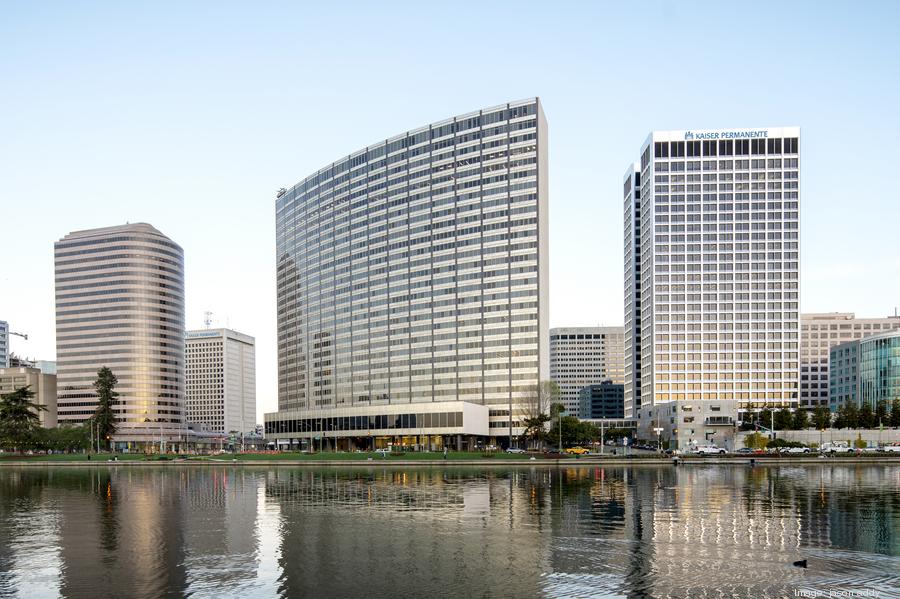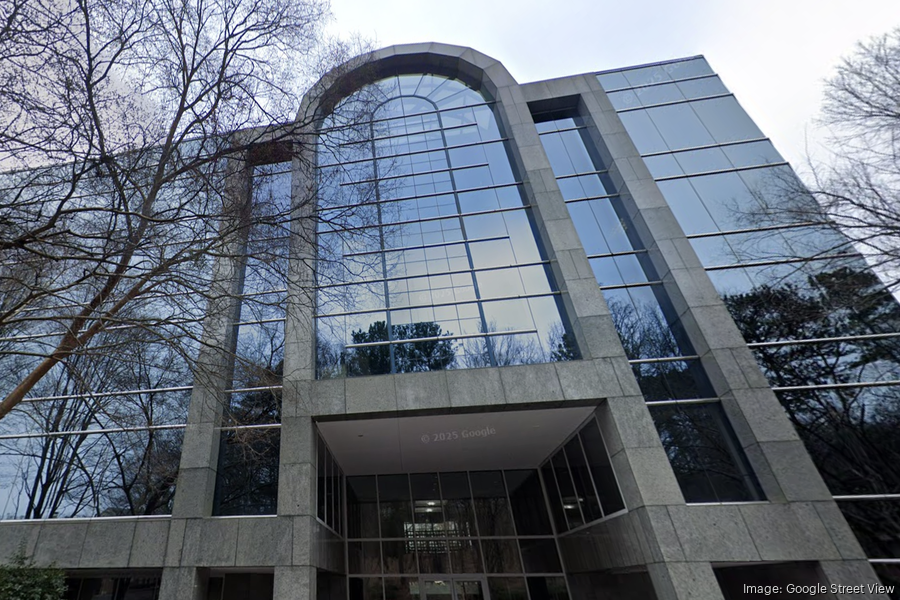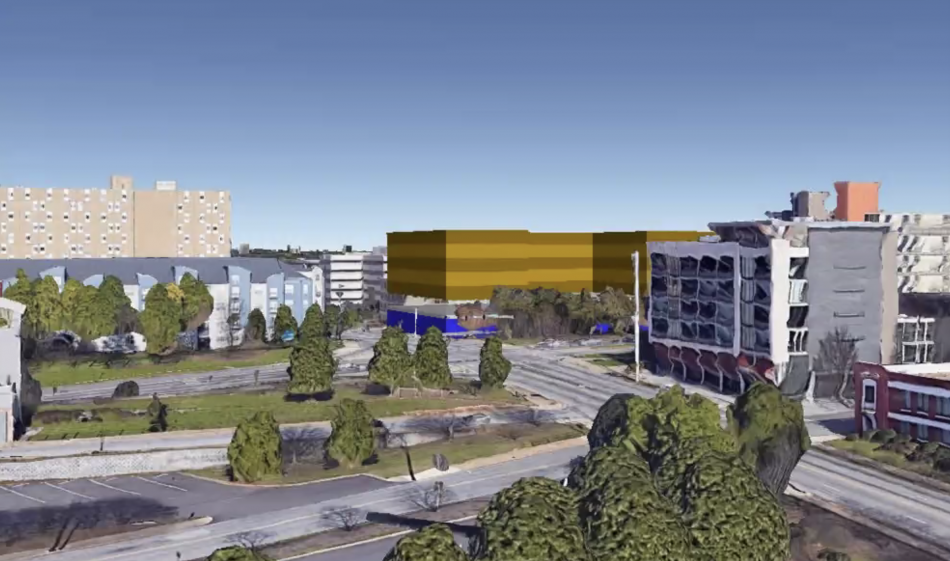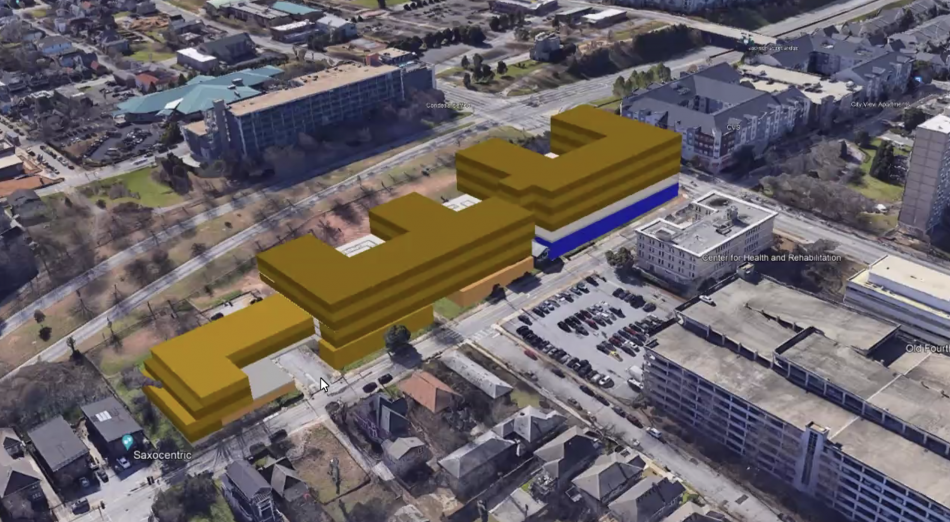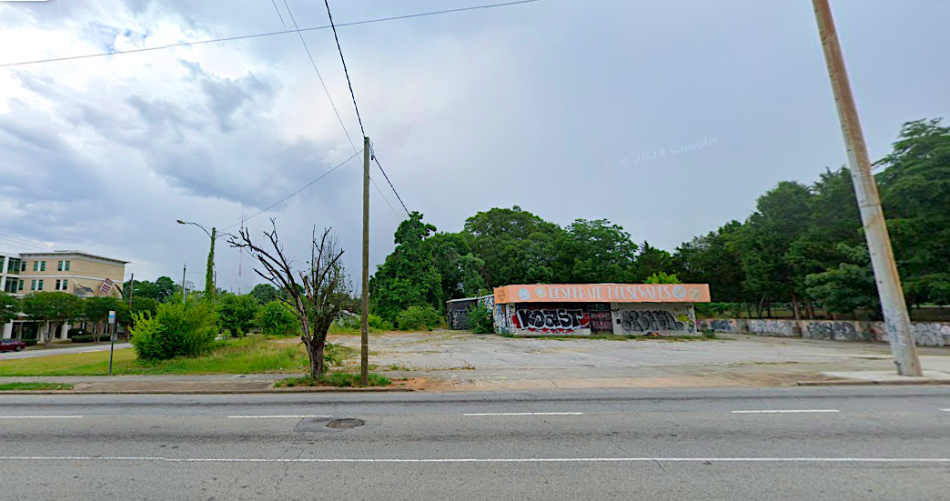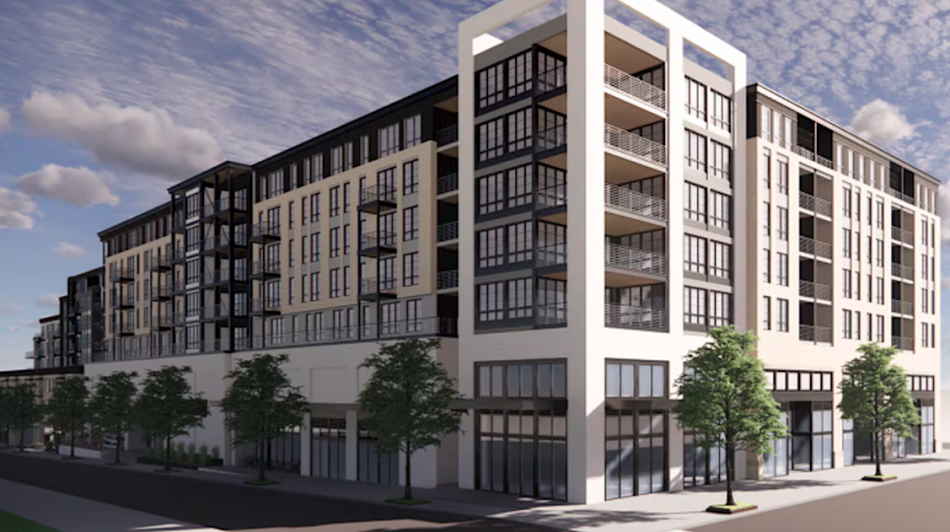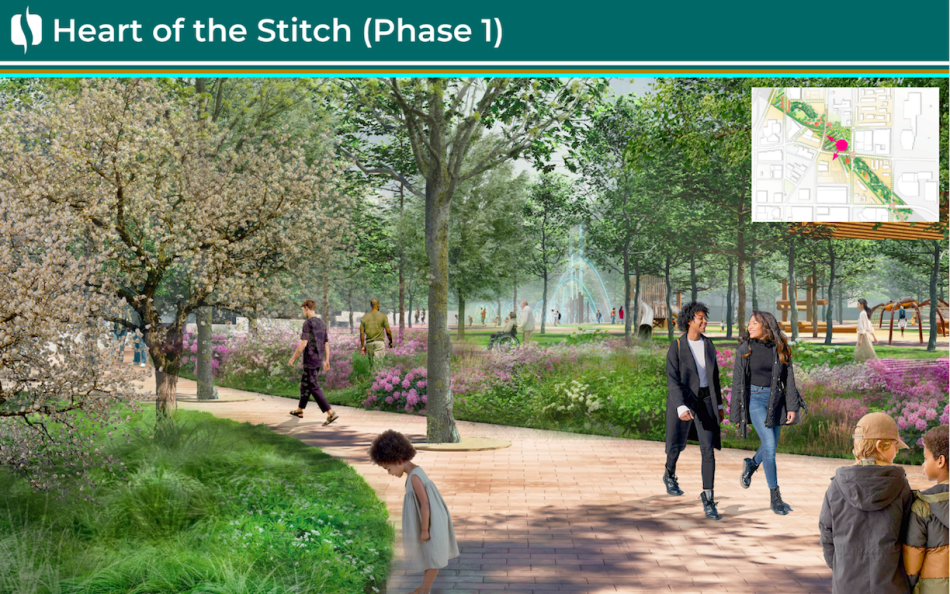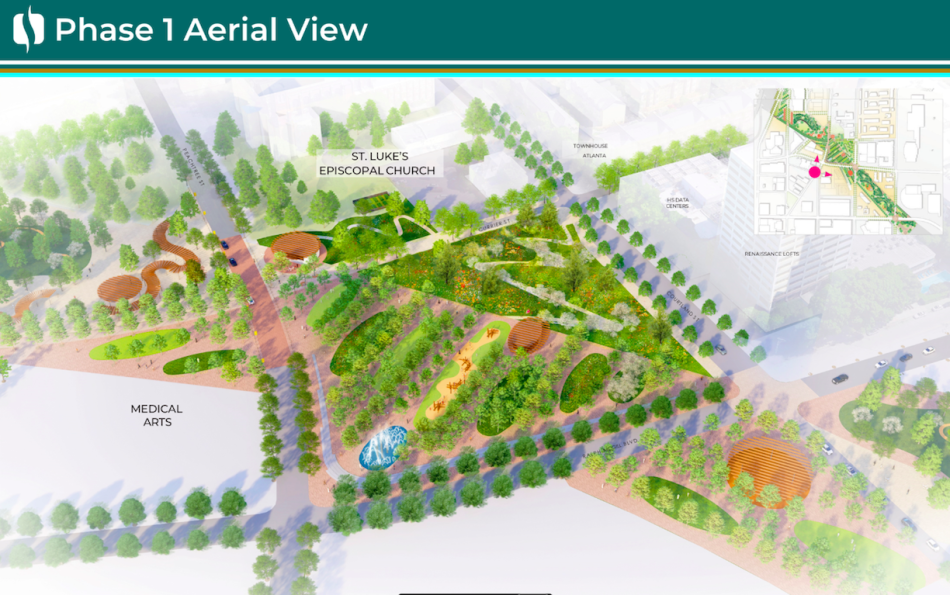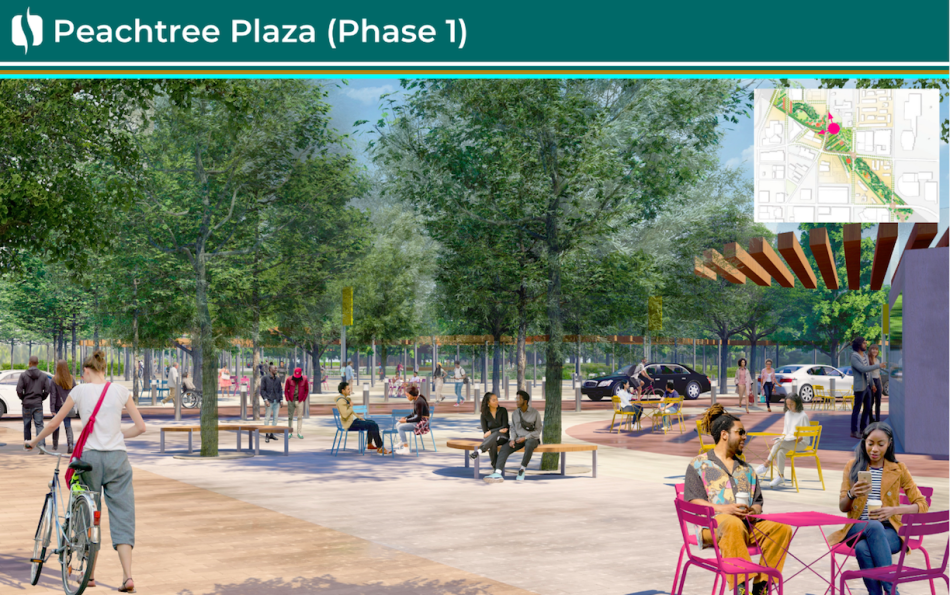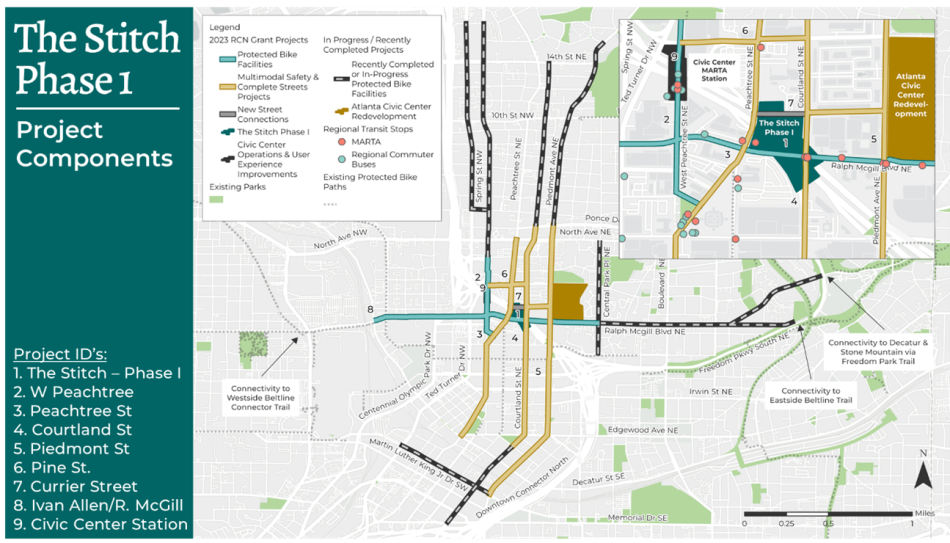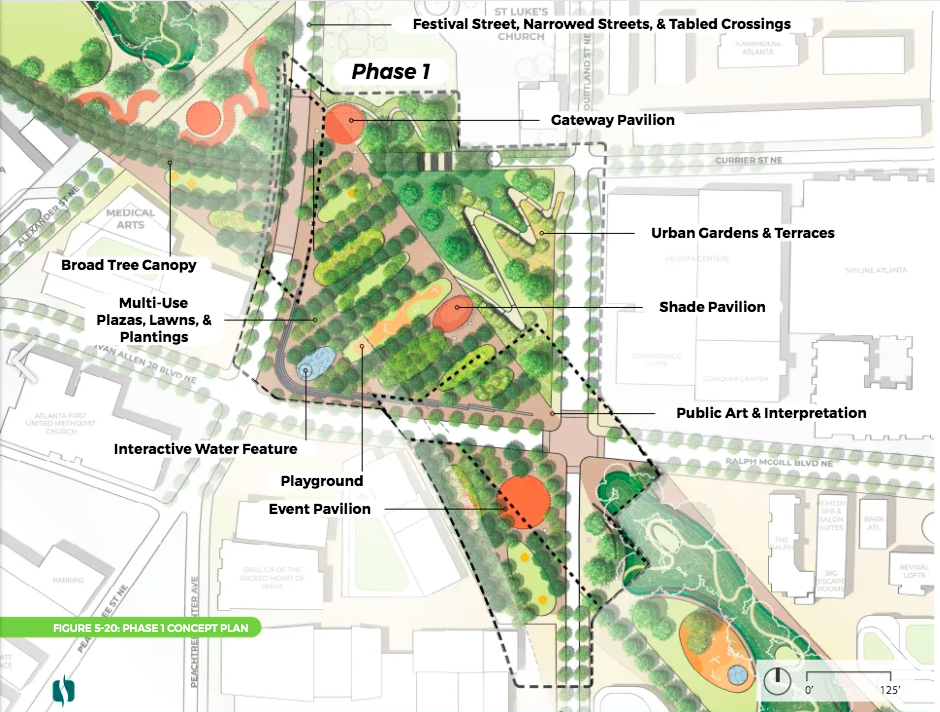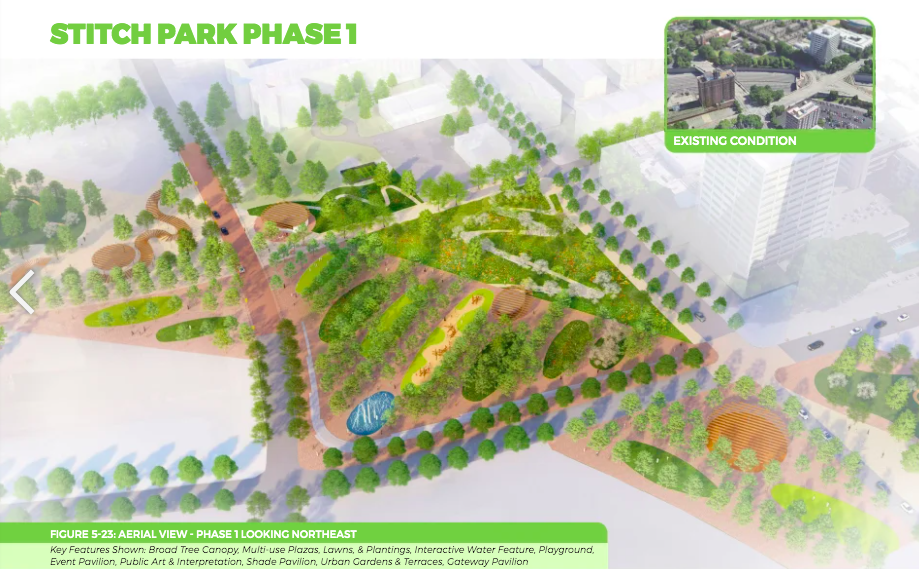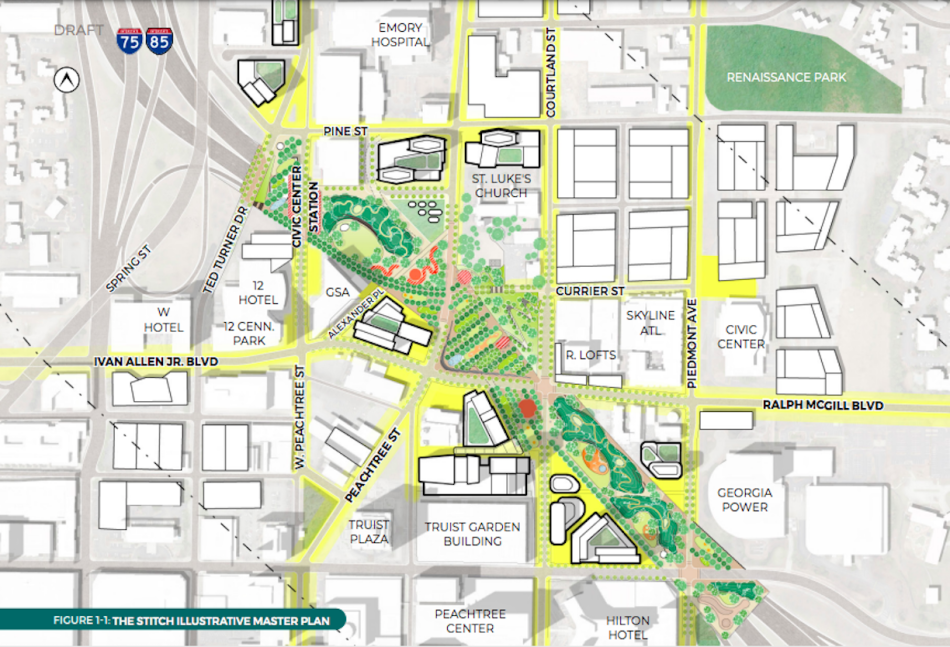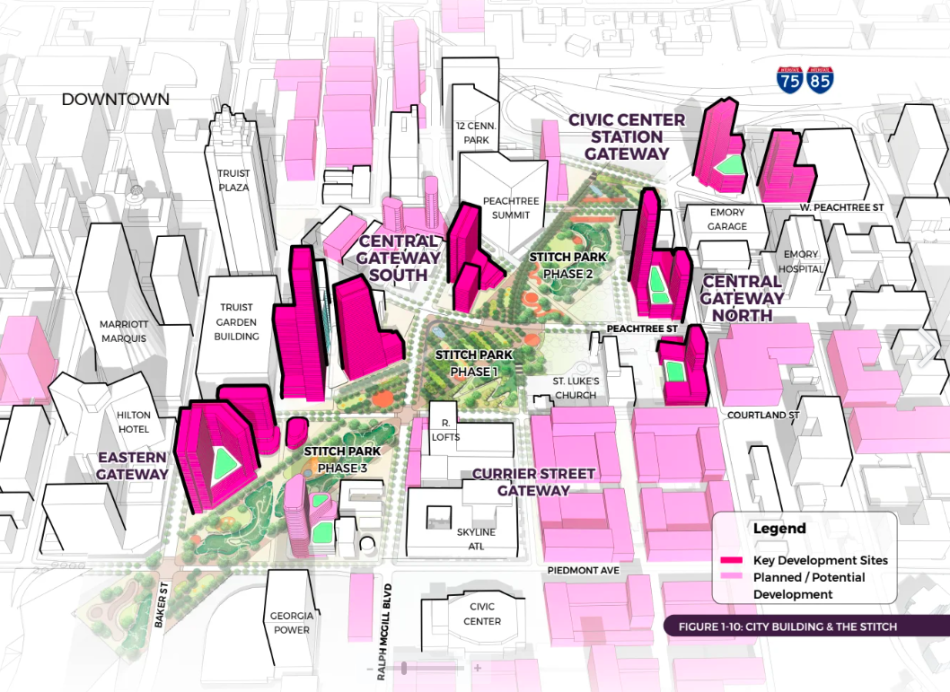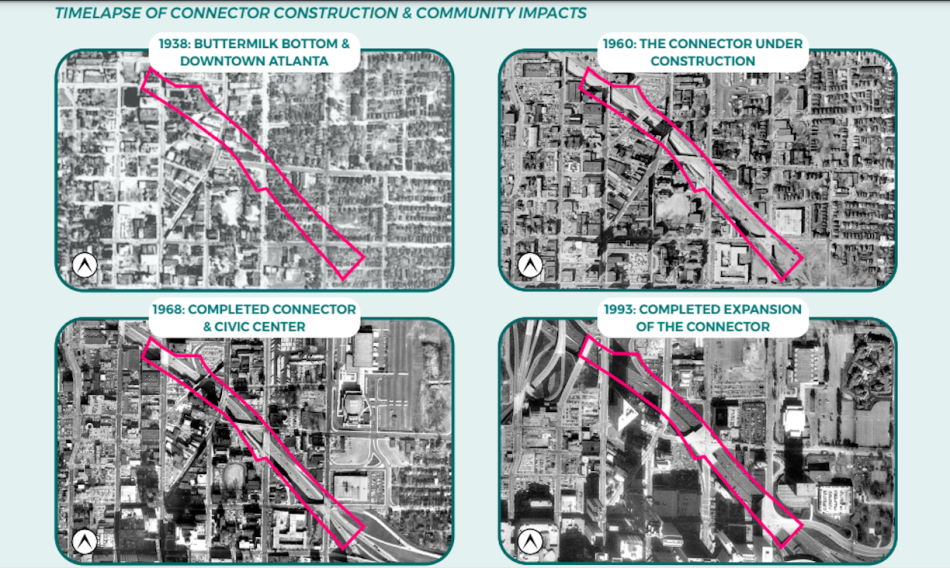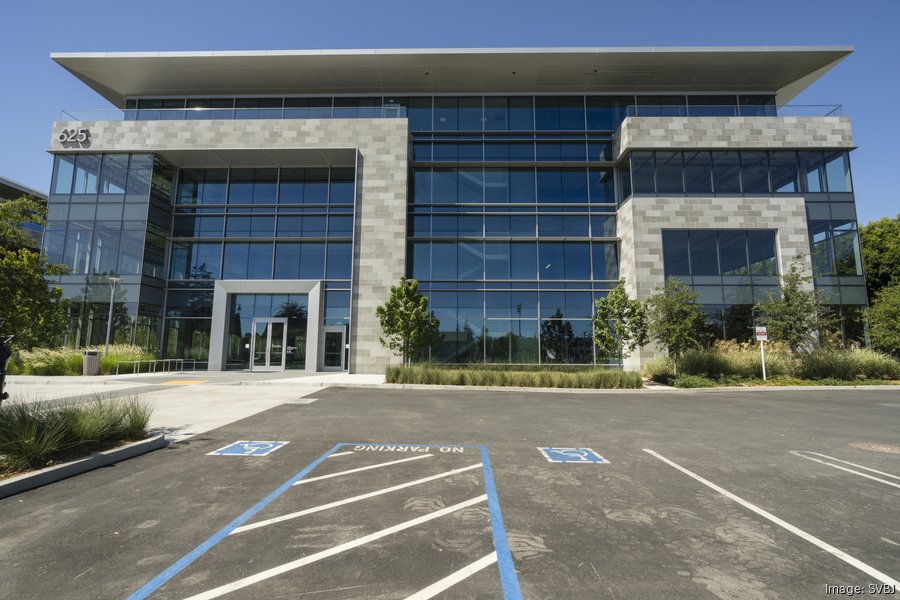The National Observer: Real Estate: Office sales activity starts to pick up
The National Observer: Real Estate: Office sales activity starts to pick up
Uncertainty about the economy’s direction and a lack of downward movement on interest rates and the 10-year Treasury may still be holding back some deals.
Uncertainty about the economy’s direction and a lack of downward movement on interest rates and the 10-year Treasury may still be holding back some deals. Read MoreBizjournals.com Feed (2019-09-06 17:16:48)
Uncertainty about the economy’s direction and a lack of downward movement on interest rates and the 10-year Treasury may still be holding back some deals.
The National Observer: Real Estate: Office sales activity starts to pick up
The National Observer: Real Estate: Office sales activity starts to pick up
Uncertainty about the economy’s direction and a lack of downward movement on interest rates and the 10-year Treasury may still be holding back some deals.
Uncertainty about the economy’s direction and a lack of downward movement on interest rates and the 10-year Treasury may still be holding back some deals. Read MoreBizjournals.com Feed (2022-04-02 21:43:57)
Uncertainty about the economy’s direction and a lack of downward movement on interest rates and the 10-year Treasury may still be holding back some deals.
Fernbank Museum set to embark on $27M transformation
Fernbank Museum set to embark on $27M transformation
Fernbank Museum set to embark on $27M transformation
Josh Green
Thu, 08/07/2025 – 08:18
Following a successful fundraising campaign, one of Atlanta’s most cherished institutions, Fernbank Museum, is gearing up for its largest renovation and upgrade since it opened in 1992.
Fernbank leadership announced this week that $27 million raised from donations will “revolutionize the guest experience” with a series of new exhibits and learning galleries spread across all three floors of the eastside facility.
The museum’s goal is to reimagine how guests engage with content, connecting indoor and outdoor offerings at the 120-acre education campus that includes a 3D theater and nature experiences in Fernbank Forest and WildWoods.
The additions are set to open in phases over the next two years. They will include a landmark new signature exhibition called Changing Earth, an interactive science discovery area, expanded Star Gallery, and more temporary exhibit gallery space.
Improved accessibility throughout the museum, in terms of physical spaces and content connectivity, will be another focus, per Fernbank leadership. The latter work will include the addition of an elevator and more automatic doors.
As museum attendance and memberships continue to grow, Fernbank aims “to offer layered experiences that connect guests more holistically to science, nature, and human culture, providing opportunities to engage all ages of learners in relevant and entertaining ways,” said Jennifer Grant Warner, Fernbank’s president and CEO, in an announcement.
As the main new draw, Changing Earth will be Fernbank’s largest permanent exhibit, with a goal of showcasing the planet’s dynamic systems, beauty, phenomena, and diversity. That will include interactive and immersive features (see: the “Tectonic Dashboard” and biodiversity “Tree of Life”), touchable objects, and real specimens.
Contributors to Fernbank’s fundraising campaign included The Gary W. Rollins Foundation, the Robert W. Woodruff Foundation, and more than 80 other funders, with eight donations totaling $1 million or more each, per officials.
In addition to Changing Earth, new aspects coming to Fernbank as part of the $27-million initiative are described by museum leadership as follows, edited for length:
OUR PLACE IN THE COSMOS
The Star Gallery, which features a fiber optic ceiling mapping the stars and constellations of the evening Georgia sky, will see a transformation with expanded content about the solar system and origins of our universe, as well as cinematic media. Guests will explore how humans have connected to the constellations over time and how we are using science today to reconstruct our planet’s 13.8-billion-year story.
ORKIN DISCOVERY ZONE
The new Orkin Discovery Zone will feature a hands-on, active learning environment on the museum’s third floor. Guests of ages will step into the role of a scientist and hone their observation skills while they explore authentic objects, live animals, and interactives, learning about biodiversity, classification, communication, and more.
Highlights include the opportunity to peer through scopes to discoveries in WildWoods, see examples of biodiversity through real specimens, observe live animals in terrariums, and build a bug using a spinning activity that combines the traits of different insects.
ADDITIONAL TEMPORARY GALLERY
The new temporary gallery adjacent to Changing Earth will allow the museum to curate its own temporary exhibits and feature traveling exhibits to delve deeper into natural history themes.
Fernbank’s schedule calls for opening Our Place in the Cosmos in late 2025.
The Orkin Discovery Zone is expected to open in 2026, and Changing Earth is anticipated to debut in 2027, alongside the temporary gallery space and expanded accessibility.
…
Follow us on social media:
Twitter / Facebook/and now: Instagram
• Storied property called Atlanta’s first modern home up for grabs (Urbanize Atlanta)

Fernbank Museum set to embark on $27M transformation
Josh Green
Thu, 08/07/2025 – 08:18
Following a successful fundraising campaign, one of Atlanta’s most cherished institutions, Fernbank Museum, is gearing up for its largest renovation and upgrade since it opened in 1992. Fernbank leadership announced this week that $27 million raised from donations will “revolutionize the guest experience” with a series of new exhibits and learning galleries spread across all three floors of the eastside facility. The museum’s goal is to reimagine how guests engage with content, connecting indoor and outdoor offerings at the 120-acre education campus that includes a 3D theater and nature experiences in Fernbank Forest and WildWoods.The additions are set to open in phases over the next two years. They will include a landmark new signature exhibition called Changing Earth, an interactive science discovery area, expanded Star Gallery, and more temporary exhibit gallery space. Improved accessibility throughout the museum, in terms of physical spaces and content connectivity, will be another focus, per Fernbank leadership. The latter work will include the addition of an elevator and more automatic doors.
Plans for the “revolutionary” new Changing Earth exhibit. Courtesy of Fernbank Museum
As museum attendance and memberships continue to grow, Fernbank aims “to offer layered experiences that connect guests more holistically to science, nature, and human culture, providing opportunities to engage all ages of learners in relevant and entertaining ways,” said Jennifer Grant Warner, Fernbank’s president and CEO, in an announcement. As the main new draw, Changing Earth will be Fernbank’s largest permanent exhibit, with a goal of showcasing the planet’s dynamic systems, beauty, phenomena, and diversity. That will include interactive and immersive features (see: the “Tectonic Dashboard” and biodiversity “Tree of Life”), touchable objects, and real specimens.Contributors to Fernbank’s fundraising campaign included The Gary W. Rollins Foundation, the Robert W. Woodruff Foundation, and more than 80 other funders, with eight donations totaling $1 million or more each, per officials.
The Changing Earth Life Biosphere. Courtesy of Fernbank Museum
In addition to Changing Earth, new aspects coming to Fernbank as part of the $27-million initiative are described by museum leadership as follows, edited for length: OUR PLACE IN THE COSMOSThe Star Gallery, which features a fiber optic ceiling mapping the stars and constellations of the evening Georgia sky, will see a transformation with expanded content about the solar system and origins of our universe, as well as cinematic media. Guests will explore how humans have connected to the constellations over time and how we are using science today to reconstruct our planet’s 13.8-billion-year story.ORKIN DISCOVERY ZONEThe new Orkin Discovery Zone will feature a hands-on, active learning environment on the museum’s third floor. Guests of ages will step into the role of a scientist and hone their observation skills while they explore authentic objects, live animals, and interactives, learning about biodiversity, classification, communication, and more.Highlights include the opportunity to peer through scopes to discoveries in WildWoods, see examples of biodiversity through real specimens, observe live animals in terrariums, and build a bug using a spinning activity that combines the traits of different insects. ADDITIONAL TEMPORARY GALLERYThe new temporary gallery adjacent to Changing Earth will allow the museum to curate its own temporary exhibits and feature traveling exhibits to delve deeper into natural history themes.
The Earth Systems section of the Changing Earth exhibit. Courtesy of Fernbank Museum
Fernbank’s schedule calls for opening Our Place in the Cosmos in late 2025. The Orkin Discovery Zone is expected to open in 2026, and Changing Earth is anticipated to debut in 2027, alongside the temporary gallery space and expanded accessibility….Follow us on social media: Twitter / Facebook/and now: Instagram • Storied property called Atlanta’s first modern home up for grabs (Urbanize Atlanta)
Tags
767 Clifton Road
Fernbank Museum of Natural History
Fernbank Museum
Interior Design
Fernbank
Star Gallery
WildWoods
Orkin Discovery Zone
Robert W. Woodruff Foundation
The Gary W. Rollins Foundation
STEAM Lab
Images
Plans for the “revolutionary” new Changing Earth exhibit. Courtesy of Fernbank Museum
The Earth Systems section of the Changing Earth exhibit. Courtesy of Fernbank Museum
The Changing Earth Life Biosphere. Courtesy of Fernbank Museum
Subtitle
Officials: Multifaceted upgrades—the biggest since early 1990s—will “revolutionize the guest experience”
Neighborhood
Druid Hills
Background Image
Image
Before/After Images
Sponsored Post
Off Read More
Fernbank Museum set to embark on $27M transformation
Josh Green
Thu, 08/07/2025 – 08:18
Following a successful fundraising campaign, one of Atlanta’s most cherished institutions, Fernbank Museum, is gearing up for its largest renovation and upgrade since it opened in 1992. Fernbank leadership announced this week that $27 million raised from donations will “revolutionize the guest experience” with a series of new exhibits and learning galleries spread across all three floors of the eastside facility. The museum’s goal is to reimagine how guests engage with content, connecting indoor and outdoor offerings at the 120-acre education campus that includes a 3D theater and nature experiences in Fernbank Forest and WildWoods.The additions are set to open in phases over the next two years. They will include a landmark new signature exhibition called Changing Earth, an interactive science discovery area, expanded Star Gallery, and more temporary exhibit gallery space. Improved accessibility throughout the museum, in terms of physical spaces and content connectivity, will be another focus, per Fernbank leadership. The latter work will include the addition of an elevator and more automatic doors.
Plans for the “revolutionary” new Changing Earth exhibit. Courtesy of Fernbank Museum
As museum attendance and memberships continue to grow, Fernbank aims “to offer layered experiences that connect guests more holistically to science, nature, and human culture, providing opportunities to engage all ages of learners in relevant and entertaining ways,” said Jennifer Grant Warner, Fernbank’s president and CEO, in an announcement. As the main new draw, Changing Earth will be Fernbank’s largest permanent exhibit, with a goal of showcasing the planet’s dynamic systems, beauty, phenomena, and diversity. That will include interactive and immersive features (see: the “Tectonic Dashboard” and biodiversity “Tree of Life”), touchable objects, and real specimens.Contributors to Fernbank’s fundraising campaign included The Gary W. Rollins Foundation, the Robert W. Woodruff Foundation, and more than 80 other funders, with eight donations totaling $1 million or more each, per officials.
The Changing Earth Life Biosphere. Courtesy of Fernbank Museum
In addition to Changing Earth, new aspects coming to Fernbank as part of the $27-million initiative are described by museum leadership as follows, edited for length: OUR PLACE IN THE COSMOSThe Star Gallery, which features a fiber optic ceiling mapping the stars and constellations of the evening Georgia sky, will see a transformation with expanded content about the solar system and origins of our universe, as well as cinematic media. Guests will explore how humans have connected to the constellations over time and how we are using science today to reconstruct our planet’s 13.8-billion-year story.ORKIN DISCOVERY ZONEThe new Orkin Discovery Zone will feature a hands-on, active learning environment on the museum’s third floor. Guests of ages will step into the role of a scientist and hone their observation skills while they explore authentic objects, live animals, and interactives, learning about biodiversity, classification, communication, and more.Highlights include the opportunity to peer through scopes to discoveries in WildWoods, see examples of biodiversity through real specimens, observe live animals in terrariums, and build a bug using a spinning activity that combines the traits of different insects. ADDITIONAL TEMPORARY GALLERYThe new temporary gallery adjacent to Changing Earth will allow the museum to curate its own temporary exhibits and feature traveling exhibits to delve deeper into natural history themes.
The Earth Systems section of the Changing Earth exhibit. Courtesy of Fernbank Museum
Fernbank’s schedule calls for opening Our Place in the Cosmos in late 2025. The Orkin Discovery Zone is expected to open in 2026, and Changing Earth is anticipated to debut in 2027, alongside the temporary gallery space and expanded accessibility….Follow us on social media: Twitter / Facebook/and now: Instagram • Storied property called Atlanta’s first modern home up for grabs (Urbanize Atlanta)
Tags
767 Clifton Road
Fernbank Museum of Natural History
Fernbank Museum
Interior Design
Fernbank
Star Gallery
WildWoods
Orkin Discovery Zone
Robert W. Woodruff Foundation
The Gary W. Rollins Foundation
STEAM Lab
Images
Plans for the “revolutionary” new Changing Earth exhibit. Courtesy of Fernbank Museum
The Earth Systems section of the Changing Earth exhibit. Courtesy of Fernbank Museum
The Changing Earth Life Biosphere. Courtesy of Fernbank Museum
Subtitle
Officials: Multifaceted upgrades—the biggest since early 1990s—will “revolutionize the guest experience”
Neighborhood
Druid Hills
Background Image
Image
Before/After Images
Sponsored Post
Off
Potential sale of Dunwoody office building lays ground work for demolition, residential conversion
Potential sale of Dunwoody office building lays ground work for demolition, residential conversion
The northern Atlanta suburbs have become a hot spot for office-to-residential redevelopment projects.
The northern Atlanta suburbs have become a hot spot for office-to-residential redevelopment projects. Read MoreBizjournals.com Feed (2019-09-06 17:16:48)
The northern Atlanta suburbs have become a hot spot for office-to-residential redevelopment projects.
Potential sale of Dunwoody office building lays ground work for demolition, residential conversion
Potential sale of Dunwoody office building lays ground work for demolition, residential conversion
The northern Atlanta suburbs have become a hot spot for office-to-residential redevelopment projects.
The northern Atlanta suburbs have become a hot spot for office-to-residential redevelopment projects. Read MoreBizjournals.com Feed (2022-04-02 21:43:57)
The northern Atlanta suburbs have become a hot spot for office-to-residential redevelopment projects.
Officials: Tax break for project in red-hot O4W not tied to grocery store
Officials: Tax break for project in red-hot O4W not tied to grocery store
Officials: Tax break for project in red-hot O4W not tied to grocery store
Josh Green
Wed, 08/06/2025 – 16:28
Observant development watchers of Atlanta have raised concerns that tax breaks granted to a mixed-use project in one of the city’s hottest real estate zones were contingent on the building including a grocery store that is no longer happening.
That’s not the case, according to developers and government officials who approved the multi-million-dollar tax incentive in Old Fourth Ward.
“We can definitively say that we will not be receiving any benefits that were tied to the grocery component,” said Ben Yorker, a Northwood Ravin development partner, of the project now called The Bowery at Old Fourth Ward, which his company is building in partnership with Fuqua Development.
Develop Fulton (formerly the Development Authority of Fulton County) in 2023 approved the development team’s request for $5.7 million in tax savings across 10 years for the three-building project that will consume nearly a full block. The Bowery recently started demolition work at the southeast corner of Boulevard’s intersection with Highland Avenue, just east of downtown.
Developers confirmed last week to Urbanize Atlanta the grocery store component many residents in the area had been banking on—reportedly a Publix, as of two years ago—had been nixed. Yorker said Wellstar’s sudden closure of nearby Atlanta Medical Center, which cost the area jobs and significant daytime population, along with the city’s subsequent clampdown on property rezoning, had scared away potential grocery tenants.
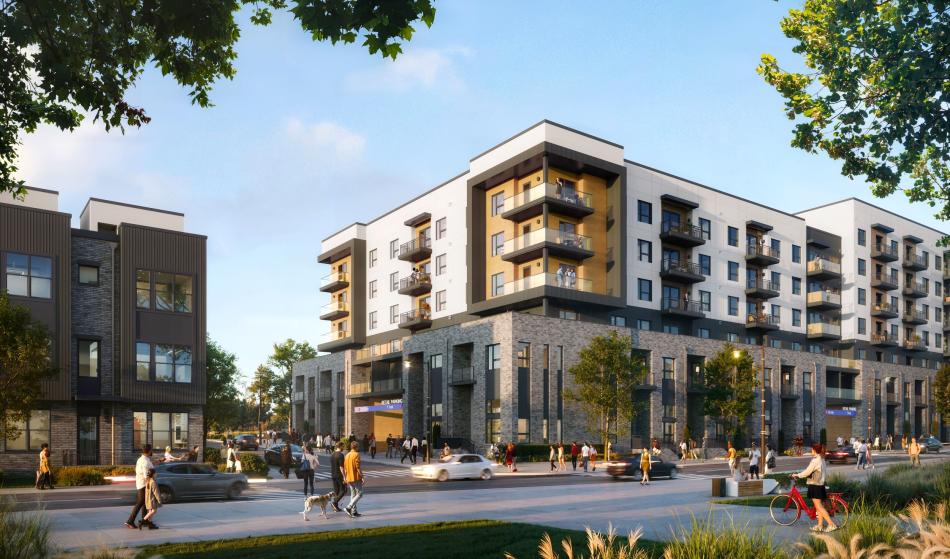
The Bowery at Old Fourth Ward’s first new rendering showing finalized plans for townhomes (left), retail, and apartments along Highland Avenue. Courtesy of Northwood Ravin/Fuqua Development
Kwanza Hall, Develop Fulton chairman, acknowledged that the hospital closure “significantly impacted the viability of that [grocery] portion of the development,” but he feels The Bowery project “still has the potential to create meaningful local impact.” Hall said Develop Fulton incentives tied to specific development components such as grocery stores are forfeited when those aspects aren’t built, but according to Yorker, that doesn’t apply in The Bowery’s case.
“This project exemplifies both the promise and the challenges of revitalization,” Hall wrote in a statement to Urbanize Atlanta. “It’s a reminder that even with approved incentives, market conditions can shift and affect a project’s composition… We will continue to coordinate with the development team to ensure the best outcomes for the community.”
Yorker balked at publicly disclosing what the grocery’s replacement might be, as plans have not been finalized.
“Though it did not work out to incorporate a grocer, we’re confident we can incorporate other meaningful features that the surrounding neighborhood will enjoy,” Yorker wrote in an email. “Our view is that our properties are most successful when the communities around them flourish.”
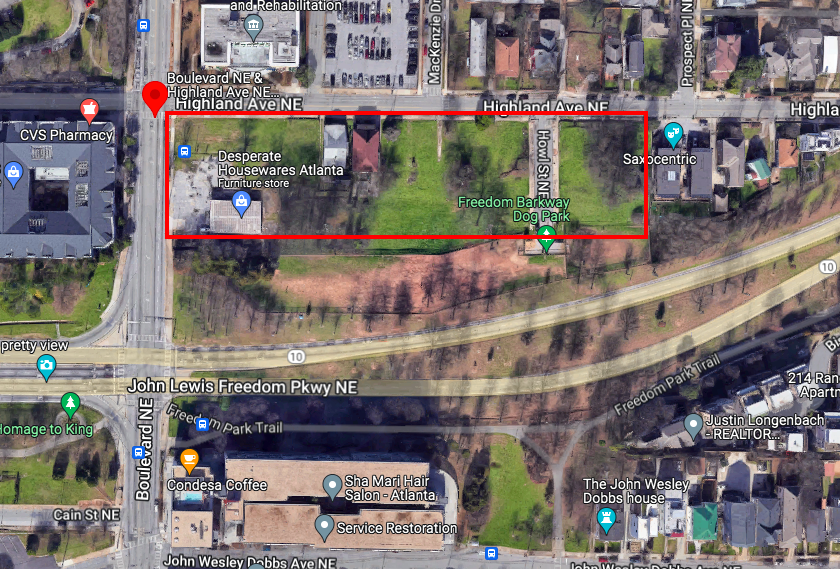
Rough boundaries of the Old Fourth Ward property in question, where Highland Avenue meets Boulevard, just north of the neighborhood dog park. Google Maps
Finalized plans for The Bowery call for a 273-unit apartment building and two townhome blocks with 12 units total. Roughly 10,000 square feet of retail with patio spaces will operate at street level.
Another 2,000 square feet of retail or incubator space will be placed so that it faces a popular dog park next door, Freedom Barkway. The project’s 400-space parking deck will include 17 spaces reserved for dog park patrons.
Once demolition and other pre-development work finishes, Yorker said construction should be ready to start in late fall this year.
Developers forecast the full project will open in early or mid-2028.
…
Follow us on social media:
Twitter / Facebook/and now: Instagram
• Old Fourth Ward news, discussion (Urbanize Atlanta)
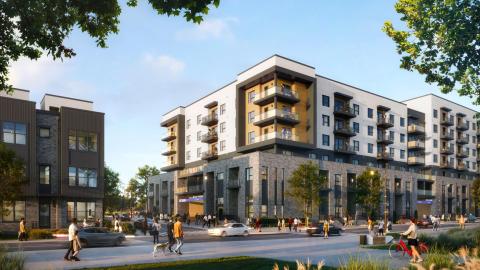
Officials: Tax break for project in red-hot O4W not tied to grocery store
Josh Green
Wed, 08/06/2025 – 16:28
Observant development watchers of Atlanta have raised concerns that tax breaks granted to a mixed-use project in one of the city’s hottest real estate zones were contingent on the building including a grocery store that is no longer happening. That’s not the case, according to developers and government officials who approved the multi-million-dollar tax incentive in Old Fourth Ward. “We can definitively say that we will not be receiving any benefits that were tied to the grocery component,” said Ben Yorker, a Northwood Ravin development partner, of the project now called The Bowery at Old Fourth Ward, which his company is building in partnership with Fuqua Development. Develop Fulton (formerly the Development Authority of Fulton County) in 2023 approved the development team’s request for $5.7 million in tax savings across 10 years for the three-building project that will consume nearly a full block. The Bowery recently started demolition work at the southeast corner of Boulevard’s intersection with Highland Avenue, just east of downtown. Developers confirmed last week to Urbanize Atlanta the grocery store component many residents in the area had been banking on—reportedly a Publix, as of two years ago—had been nixed. Yorker said Wellstar’s sudden closure of nearby Atlanta Medical Center, which cost the area jobs and significant daytime population, along with the city’s subsequent clampdown on property rezoning, had scared away potential grocery tenants.
The Bowery at Old Fourth Ward’s first new rendering showing finalized plans for townhomes (left), retail, and apartments along Highland Avenue. Courtesy of Northwood Ravin/Fuqua Development
Kwanza Hall, Develop Fulton chairman, acknowledged that the hospital closure “significantly impacted the viability of that [grocery] portion of the development,” but he feels The Bowery project “still has the potential to create meaningful local impact.” Hall said Develop Fulton incentives tied to specific development components such as grocery stores are forfeited when those aspects aren’t built, but according to Yorker, that doesn’t apply in The Bowery’s case. “This project exemplifies both the promise and the challenges of revitalization,” Hall wrote in a statement to Urbanize Atlanta. “It’s a reminder that even with approved incentives, market conditions can shift and affect a project’s composition… We will continue to coordinate with the development team to ensure the best outcomes for the community.”Yorker balked at publicly disclosing what the grocery’s replacement might be, as plans have not been finalized. “Though it did not work out to incorporate a grocer, we’re confident we can incorporate other meaningful features that the surrounding neighborhood will enjoy,” Yorker wrote in an email. “Our view is that our properties are most successful when the communities around them flourish.”
An early look at the proposal’s scope as it relates to Tribute Lofts, pictured at right. Submitted
Rough boundaries of the Old Fourth Ward property in question, where Highland Avenue meets Boulevard, just north of the neighborhood dog park. Google Maps
Finalized plans for The Bowery call for a 273-unit apartment building and two townhome blocks with 12 units total. Roughly 10,000 square feet of retail with patio spaces will operate at street level. Another 2,000 square feet of retail or incubator space will be placed so that it faces a popular dog park next door, Freedom Barkway. The project’s 400-space parking deck will include 17 spaces reserved for dog park patrons. Once demolition and other pre-development work finishes, Yorker said construction should be ready to start in late fall this year. Developers forecast the full project will open in early or mid-2028. …Follow us on social media: Twitter / Facebook/and now: Instagram • Old Fourth Ward news, discussion (Urbanize Atlanta)
Tags
505 Highland Ave. NE
The Bowery at Old Fourth Ward
Highland Avenue NE at Boulevard
Fuqua Development
Atlanta Development
O4W
Desperate Housewares Atlanta
Fourth Ward Alliance
Infill Development
Boulevard
North Highland Avenue
Fuqua
Jeff Fuqua
Tribute Lofts
Freedom Barkway Dog Park
Atlanta Park
Atlanta apartments
Tax Breaks
Development Authority of Fulton County
Mixed-Use Development
Northwood Ravin
Cooper Carry
Cooper Carry(16664)
Atlanta Dog Parks
Dog Parks
Images
The Bowery at Old Fourth Ward’s first new rendering showing finalized plans for townhomes (left), retail, and apartments along Highland Avenue. Courtesy of Northwood Ravin/Fuqua Development
An early look at the proposal’s scope as it relates to Tribute Lofts, pictured at right. Submitted
Looking southwest, initial images of Fuqua Development’s proposal distributed three years ago are shown next to John Lewis Freedom Parkway. Plans have been refined since. Submitted
Tentative breakdown of the Fuqua proposal as submitted to the city in 2022. Fuqua Development/Office of Zoning and Development
Prior to demolition work this month, the idle 3-acre site and shuttered Desperate Housewares Atlanta furniture store, seen here in 2024. Google Maps
An earlier rendering illustrating how the project will transform one corner of the Highland Avenue-Boulevard intersection. (Highland Avenue frontage is at left.) Northwood Ravin/Fuqua Development; 2023
Rough boundaries of the Old Fourth Ward property in question, where Highland Avenue meets Boulevard, just north of the neighborhood dog park. Google Maps
Subtitle
Closure of nearby hospital “significantly impacted viability” of grocer at The Bowery, Develop Fulton acknowledges
Neighborhood
Old Fourth Ward
Background Image
Image
Associated Project
Fuqua Development – O4W Proposal
Before/After Images
Sponsored Post
Off Read More
Officials: Tax break for project in red-hot O4W not tied to grocery store
Josh Green
Wed, 08/06/2025 – 16:28
Observant development watchers of Atlanta have raised concerns that tax breaks granted to a mixed-use project in one of the city’s hottest real estate zones were contingent on the building including a grocery store that is no longer happening. That’s not the case, according to developers and government officials who approved the multi-million-dollar tax incentive in Old Fourth Ward. “We can definitively say that we will not be receiving any benefits that were tied to the grocery component,” said Ben Yorker, a Northwood Ravin development partner, of the project now called The Bowery at Old Fourth Ward, which his company is building in partnership with Fuqua Development. Develop Fulton (formerly the Development Authority of Fulton County) in 2023 approved the development team’s request for $5.7 million in tax savings across 10 years for the three-building project that will consume nearly a full block. The Bowery recently started demolition work at the southeast corner of Boulevard’s intersection with Highland Avenue, just east of downtown. Developers confirmed last week to Urbanize Atlanta the grocery store component many residents in the area had been banking on—reportedly a Publix, as of two years ago—had been nixed. Yorker said Wellstar’s sudden closure of nearby Atlanta Medical Center, which cost the area jobs and significant daytime population, along with the city’s subsequent clampdown on property rezoning, had scared away potential grocery tenants.
The Bowery at Old Fourth Ward’s first new rendering showing finalized plans for townhomes (left), retail, and apartments along Highland Avenue. Courtesy of Northwood Ravin/Fuqua Development
Kwanza Hall, Develop Fulton chairman, acknowledged that the hospital closure “significantly impacted the viability of that [grocery] portion of the development,” but he feels The Bowery project “still has the potential to create meaningful local impact.” Hall said Develop Fulton incentives tied to specific development components such as grocery stores are forfeited when those aspects aren’t built, but according to Yorker, that doesn’t apply in The Bowery’s case. “This project exemplifies both the promise and the challenges of revitalization,” Hall wrote in a statement to Urbanize Atlanta. “It’s a reminder that even with approved incentives, market conditions can shift and affect a project’s composition… We will continue to coordinate with the development team to ensure the best outcomes for the community.”Yorker balked at publicly disclosing what the grocery’s replacement might be, as plans have not been finalized. “Though it did not work out to incorporate a grocer, we’re confident we can incorporate other meaningful features that the surrounding neighborhood will enjoy,” Yorker wrote in an email. “Our view is that our properties are most successful when the communities around them flourish.”
An early look at the proposal’s scope as it relates to Tribute Lofts, pictured at right. Submitted
Rough boundaries of the Old Fourth Ward property in question, where Highland Avenue meets Boulevard, just north of the neighborhood dog park. Google Maps
Finalized plans for The Bowery call for a 273-unit apartment building and two townhome blocks with 12 units total. Roughly 10,000 square feet of retail with patio spaces will operate at street level. Another 2,000 square feet of retail or incubator space will be placed so that it faces a popular dog park next door, Freedom Barkway. The project’s 400-space parking deck will include 17 spaces reserved for dog park patrons. Once demolition and other pre-development work finishes, Yorker said construction should be ready to start in late fall this year. Developers forecast the full project will open in early or mid-2028. …Follow us on social media: Twitter / Facebook/and now: Instagram • Old Fourth Ward news, discussion (Urbanize Atlanta)
Tags
505 Highland Ave. NE
The Bowery at Old Fourth Ward
Highland Avenue NE at Boulevard
Fuqua Development
Atlanta Development
O4W
Desperate Housewares Atlanta
Fourth Ward Alliance
Infill Development
Boulevard
North Highland Avenue
Fuqua
Jeff Fuqua
Tribute Lofts
Freedom Barkway Dog Park
Atlanta Park
Atlanta apartments
Tax Breaks
Development Authority of Fulton County
Mixed-Use Development
Northwood Ravin
Cooper Carry
Cooper Carry(16664)
Atlanta Dog Parks
Dog Parks
Images
The Bowery at Old Fourth Ward’s first new rendering showing finalized plans for townhomes (left), retail, and apartments along Highland Avenue. Courtesy of Northwood Ravin/Fuqua Development
An early look at the proposal’s scope as it relates to Tribute Lofts, pictured at right. Submitted
Looking southwest, initial images of Fuqua Development’s proposal distributed three years ago are shown next to John Lewis Freedom Parkway. Plans have been refined since. Submitted
Tentative breakdown of the Fuqua proposal as submitted to the city in 2022. Fuqua Development/Office of Zoning and Development
Prior to demolition work this month, the idle 3-acre site and shuttered Desperate Housewares Atlanta furniture store, seen here in 2024. Google Maps
An earlier rendering illustrating how the project will transform one corner of the Highland Avenue-Boulevard intersection. (Highland Avenue frontage is at left.) Northwood Ravin/Fuqua Development; 2023
Rough boundaries of the Old Fourth Ward property in question, where Highland Avenue meets Boulevard, just north of the neighborhood dog park. Google Maps
Subtitle
Closure of nearby hospital “significantly impacted viability” of grocer at The Bowery, Develop Fulton acknowledges
Neighborhood
Old Fourth Ward
Background Image
Image
Associated Project
Fuqua Development – O4W Proposal
Before/After Images
Sponsored Post
Off
Feds yank $151M from Stitch project; leaders vow it’s still happening
Feds yank $151M from Stitch project; leaders vow it’s still happening
Feds yank $151M from Stitch project; leaders vow it’s still happening
Josh Green
Wed, 08/06/2025 – 14:00
Nearly a decade after it was first proposed, a transformative greenspace and infrastructure project in downtown Atlanta had finally reached the doorstep of construction phases this year. But now, the bulk of its funding is officially gone.
The One Big Beautiful Bill Act, signed into law by President Donald Trump last month, rescinded $151.4 million in federal grant funds that had been awarded to the highway-capping Stitch project in early 2024.
That funding constituted roughly 3/4th of the estimated cost to design and build the Stitch’s multi-acre first phase. Ouch.
So is the bill a crushing, final blow for an ambitious project that aims to stitch intown neighborhoods back together, decades after being cleaved apart by a freeway? Not even close, says Stitch leadership.
Jack Cebe, director of the Stitch and an engineer and landscape architect by trade, acknowledged the loss of federal funds is “disappointing” but relayed that “the Stitch is happening” nonetheless in a newsletter today.
The Stitch’s 5.7-acre phase one—envisioned as the green heart of the project, with pathways, native gardens, a plaza, shade structures, pavilions, a playground, restrooms, and multiple connections to nearby streets—was on track to launch construction in 2026. Until last month, that is.
More than $40 million in local funding for phase one had also been secured. Cebe says that aspect of the Stitch will complete permitting, approvals, and shovel-ready engineering by mid-2026. Also working in the Stitch’s favor, according to Cebe, is a reaffirmed commitment to see it through from the Georgia Department of Transportation and Atlanta Mayor Andre Dickens’ office.
In April, the Atlanta City Council approved a new downtown special services district to primarily help cover the Stitch’s operations, administration, maintenance, and programs costs, as funded by property-owning taxpayers within the district.
That new tax district is, of course, separate from federal grant money. Representatives from U.S. Sen. Raphael Warnock’s office told Urbanize Atlanta in June that losing the federal cash “would necessitate a conversation with the City of Atlanta about how to proceed with the use of the [special services district] proceeds,” hinting that those funds could be channeled toward helping build out Stitch phase one.
Similar tax districts have helped fund construction of the Atlanta Beltline and Truist Park/The Battery Atlanta, as Stitch leadership has noted. Property owners near the Stitch are expected to shoulder an annual increase of about $200 in additional property taxes for every $100,000 of a property’s assessed value. The tradeoff would be that the Stitch, in theory, will eventually boost property values and make the area more desirable.
Cebe, in his upbeat missive, said the Stitch has made “significant strides” over the past two years beyond securing (if temporarily) more than $200 million in local and federal funding. Thousands of Atlanta residents also contributed input for a master plan that Dickens and the city council formally adopted in June.
Benefit events are in the works for the Stitch, which is projected to create 4,500 jobs and $9 billion in economic investment for downtown, per Cebe.
The three-phase Stitch was initially proposed back in 2016 but had been gathering momentum over the past year like never before. Phase one is planned for a middle section between Peachtree and Courtland streets, above the downtown Connector.
Phases two and three were tentatively scheduled to begin construction in 2029 and 2033, respectively, but would require a variety of additional funding sources. Those could include state and federal grants, commitments from the City of Atlanta, philanthropy, and “real estate value capture,” project leaders have said.
All told, the most recent Stitch projections called for 14 acres of new public space eventually being created over the Connector, with a price tag north of $700 million. The goal was to finish it in roughly 11 years, or sometime in 2036, pending funding.
Find more context and details for what the Stitch’s initial phase could be in the gallery above.
…
Follow us on social media:
Twitter / Facebook/and now: Instagram
• Downtown news, discussion (Urbanize Atlanta)
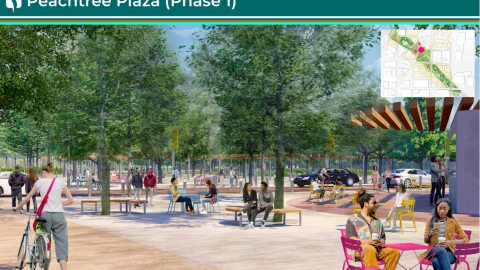
Feds yank $151M from Stitch project; leaders vow it’s still happening
Josh Green
Wed, 08/06/2025 – 14:00
Nearly a decade after it was first proposed, a transformative greenspace and infrastructure project in downtown Atlanta had finally reached the doorstep of construction phases this year. But now, the bulk of its funding is officially gone. The One Big Beautiful Bill Act, signed into law by President Donald Trump last month, rescinded $151.4 million in federal grant funds that had been awarded to the highway-capping Stitch project in early 2024. That funding constituted roughly 3/4th of the estimated cost to design and build the Stitch’s multi-acre first phase. Ouch. So is the bill a crushing, final blow for an ambitious project that aims to stitch intown neighborhoods back together, decades after being cleaved apart by a freeway? Not even close, says Stitch leadership. Jack Cebe, director of the Stitch and an engineer and landscape architect by trade, acknowledged the loss of federal funds is “disappointing” but relayed that “the Stitch is happening” nonetheless in a newsletter today.
Courtesy of CAP/ADID
The Stitch’s 5.7-acre phase one—envisioned as the green heart of the project, with pathways, native gardens, a plaza, shade structures, pavilions, a playground, restrooms, and multiple connections to nearby streets—was on track to launch construction in 2026. Until last month, that is. More than $40 million in local funding for phase one had also been secured. Cebe says that aspect of the Stitch will complete permitting, approvals, and shovel-ready engineering by mid-2026. Also working in the Stitch’s favor, according to Cebe, is a reaffirmed commitment to see it through from the Georgia Department of Transportation and Atlanta Mayor Andre Dickens’ office. In April, the Atlanta City Council approved a new downtown special services district to primarily help cover the Stitch’s operations, administration, maintenance, and programs costs, as funded by property-owning taxpayers within the district. That new tax district is, of course, separate from federal grant money. Representatives from U.S. Sen. Raphael Warnock’s office told Urbanize Atlanta in June that losing the federal cash “would necessitate a conversation with the City of Atlanta about how to proceed with the use of the [special services district] proceeds,” hinting that those funds could be channeled toward helping build out Stitch phase one. Similar tax districts have helped fund construction of the Atlanta Beltline and Truist Park/The Battery Atlanta, as Stitch leadership has noted. Property owners near the Stitch are expected to shoulder an annual increase of about $200 in additional property taxes for every $100,000 of a property’s assessed value. The tradeoff would be that the Stitch, in theory, will eventually boost property values and make the area more desirable. Cebe, in his upbeat missive, said the Stitch has made “significant strides” over the past two years beyond securing (if temporarily) more than $200 million in local and federal funding. Thousands of Atlanta residents also contributed input for a master plan that Dickens and the city council formally adopted in June.
Section of the park to begin construction first. Courtesy of CAP/ADID
Courtesy of CAP/ADID
Benefit events are in the works for the Stitch, which is projected to create 4,500 jobs and $9 billion in economic investment for downtown, per Cebe. The three-phase Stitch was initially proposed back in 2016 but had been gathering momentum over the past year like never before. Phase one is planned for a middle section between Peachtree and Courtland streets, above the downtown Connector.Phases two and three were tentatively scheduled to begin construction in 2029 and 2033, respectively, but would require a variety of additional funding sources. Those could include state and federal grants, commitments from the City of Atlanta, philanthropy, and “real estate value capture,” project leaders have said.All told, the most recent Stitch projections called for 14 acres of new public space eventually being created over the Connector, with a price tag north of $700 million. The goal was to finish it in roughly 11 years, or sometime in 2036, pending funding.Find more context and details for what the Stitch’s initial phase could be in the gallery above. …Follow us on social media: Twitter / Facebook/and now: Instagram • Downtown news, discussion (Urbanize Atlanta)
Tags
Stitch
The Stitch
U.S. Sen. Jon Ossoff
U.S. Rep. Nikema Williams
U.S. Sen. Raphael Warnock
Beltline
Atlanta BeltLine
Southside Trail
Multi-use Trails
Southside
Downtown Connector
Downtown Atlanta
Parks and Recreation
Atlanta Regional Commission
Central Atlanta Progress
Bipartisan Infrastructure Law and Inflation Reduction Act
Flint River Trail
Lovejoy
Stitch
Big Beautiful Bill
Donald Trump
Trump
President Donald Trump
Jack Cebe
Images
Planned connectivity for the Stitch’s first phase. Courtesy of Atlanta Downtown Improvement District
Components of phase 1, as currently planned. Project leaders’ schedule calls for breaking ground on this section in 2026. Courtesy of Atlanta Downtown Improvement District
Courtesy of Atlanta Downtown Improvement District
Courtesy of CAP/ADID
Courtesy of CAP/ADID
Courtesy of CAP/ADID
Courtesy of CAP/ADID
Overview of the three-phase Stitch proposal and potential related development sites. The area has the capacity to handle 16,000 new housing units at a variety of income levels, project leaders have said. Courtesy of Atlanta Downtown Improvement District
Historical perspective for the Stitch site included in today’s CAP/ADID presentation. Courtesy of CAP/ADID
Subtitle
Leadership: Highway-capping park to be construction-ready next year, with renewed support from GDOT, mayor
Neighborhood
Downtown
Background Image
Image
Before/After Images
Sponsored Post
Off Read More
Feds yank $151M from Stitch project; leaders vow it’s still happening
Josh Green
Wed, 08/06/2025 – 14:00
Nearly a decade after it was first proposed, a transformative greenspace and infrastructure project in downtown Atlanta had finally reached the doorstep of construction phases this year. But now, the bulk of its funding is officially gone. The One Big Beautiful Bill Act, signed into law by President Donald Trump last month, rescinded $151.4 million in federal grant funds that had been awarded to the highway-capping Stitch project in early 2024. That funding constituted roughly 3/4th of the estimated cost to design and build the Stitch’s multi-acre first phase. Ouch. So is the bill a crushing, final blow for an ambitious project that aims to stitch intown neighborhoods back together, decades after being cleaved apart by a freeway? Not even close, says Stitch leadership. Jack Cebe, director of the Stitch and an engineer and landscape architect by trade, acknowledged the loss of federal funds is “disappointing” but relayed that “the Stitch is happening” nonetheless in a newsletter today.
Courtesy of CAP/ADID
The Stitch’s 5.7-acre phase one—envisioned as the green heart of the project, with pathways, native gardens, a plaza, shade structures, pavilions, a playground, restrooms, and multiple connections to nearby streets—was on track to launch construction in 2026. Until last month, that is. More than $40 million in local funding for phase one had also been secured. Cebe says that aspect of the Stitch will complete permitting, approvals, and shovel-ready engineering by mid-2026. Also working in the Stitch’s favor, according to Cebe, is a reaffirmed commitment to see it through from the Georgia Department of Transportation and Atlanta Mayor Andre Dickens’ office. In April, the Atlanta City Council approved a new downtown special services district to primarily help cover the Stitch’s operations, administration, maintenance, and programs costs, as funded by property-owning taxpayers within the district. That new tax district is, of course, separate from federal grant money. Representatives from U.S. Sen. Raphael Warnock’s office told Urbanize Atlanta in June that losing the federal cash “would necessitate a conversation with the City of Atlanta about how to proceed with the use of the [special services district] proceeds,” hinting that those funds could be channeled toward helping build out Stitch phase one. Similar tax districts have helped fund construction of the Atlanta Beltline and Truist Park/The Battery Atlanta, as Stitch leadership has noted. Property owners near the Stitch are expected to shoulder an annual increase of about $200 in additional property taxes for every $100,000 of a property’s assessed value. The tradeoff would be that the Stitch, in theory, will eventually boost property values and make the area more desirable. Cebe, in his upbeat missive, said the Stitch has made “significant strides” over the past two years beyond securing (if temporarily) more than $200 million in local and federal funding. Thousands of Atlanta residents also contributed input for a master plan that Dickens and the city council formally adopted in June.
Section of the park to begin construction first. Courtesy of CAP/ADID
Courtesy of CAP/ADID
Benefit events are in the works for the Stitch, which is projected to create 4,500 jobs and $9 billion in economic investment for downtown, per Cebe. The three-phase Stitch was initially proposed back in 2016 but had been gathering momentum over the past year like never before. Phase one is planned for a middle section between Peachtree and Courtland streets, above the downtown Connector.Phases two and three were tentatively scheduled to begin construction in 2029 and 2033, respectively, but would require a variety of additional funding sources. Those could include state and federal grants, commitments from the City of Atlanta, philanthropy, and “real estate value capture,” project leaders have said.All told, the most recent Stitch projections called for 14 acres of new public space eventually being created over the Connector, with a price tag north of $700 million. The goal was to finish it in roughly 11 years, or sometime in 2036, pending funding.Find more context and details for what the Stitch’s initial phase could be in the gallery above. …Follow us on social media: Twitter / Facebook/and now: Instagram • Downtown news, discussion (Urbanize Atlanta)
Tags
Stitch
The Stitch
U.S. Sen. Jon Ossoff
U.S. Rep. Nikema Williams
U.S. Sen. Raphael Warnock
Beltline
Atlanta BeltLine
Southside Trail
Multi-use Trails
Southside
Downtown Connector
Downtown Atlanta
Parks and Recreation
Atlanta Regional Commission
Central Atlanta Progress
Bipartisan Infrastructure Law and Inflation Reduction Act
Flint River Trail
Lovejoy
Stitch
Big Beautiful Bill
Donald Trump
Trump
President Donald Trump
Jack Cebe
Images
Planned connectivity for the Stitch’s first phase. Courtesy of Atlanta Downtown Improvement District
Components of phase 1, as currently planned. Project leaders’ schedule calls for breaking ground on this section in 2026. Courtesy of Atlanta Downtown Improvement District
Courtesy of Atlanta Downtown Improvement District
Courtesy of CAP/ADID
Courtesy of CAP/ADID
Courtesy of CAP/ADID
Courtesy of CAP/ADID
Overview of the three-phase Stitch proposal and potential related development sites. The area has the capacity to handle 16,000 new housing units at a variety of income levels, project leaders have said. Courtesy of Atlanta Downtown Improvement District
Historical perspective for the Stitch site included in today’s CAP/ADID presentation. Courtesy of CAP/ADID
Subtitle
Leadership: Highway-capping park to be construction-ready next year, with renewed support from GDOT, mayor
Neighborhood
Downtown
Background Image
Image
Before/After Images
Sponsored Post
Off
CRE investment activity picks up despite economic headwinds and high interest rates
CRE investment activity picks up despite economic headwinds and high interest rates
Economic uncertainties and interest rates continue to play a significant role in commercial real estate dealmaking.
Economic uncertainties and interest rates continue to play a significant role in commercial real estate dealmaking. Read MoreBizjournals.com Feed (2019-09-06 17:16:48)
Economic uncertainties and interest rates continue to play a significant role in commercial real estate dealmaking.
CRE investment activity picks up despite economic headwinds and high interest rates
CRE investment activity picks up despite economic headwinds and high interest rates
Economic uncertainties and interest rates continue to play a significant role in commercial real estate dealmaking.
Economic uncertainties and interest rates continue to play a significant role in commercial real estate dealmaking. Read MoreBizjournals.com Feed (2022-04-02 21:43:57)
Economic uncertainties and interest rates continue to play a significant role in commercial real estate dealmaking.
Developer Beefs Up Plans For $1.2B Data Center Project South Of Atlanta
Developer Beefs Up Plans For $1.2B Data Center Project South Of Atlanta
A 1-year-old data center development company led by Meta and Microsoft alumni is boosting the size of a billion-dollar proposed digital infrastructure campus roughly 70 miles south of Downtown Atlanta.
A 1-year-old data center development company led by Meta and Microsoft alumni is boosting the size of a billion-dollar proposed digital infrastructure campus roughly 70 miles south of Downtown Atlanta. Read MoreBisnow News Feed
A 1-year-old data center development company led by Meta and Microsoft alumni is boosting the size of a billion-dollar proposed digital infrastructure campus roughly 70 miles south of Downtown Atlanta.
